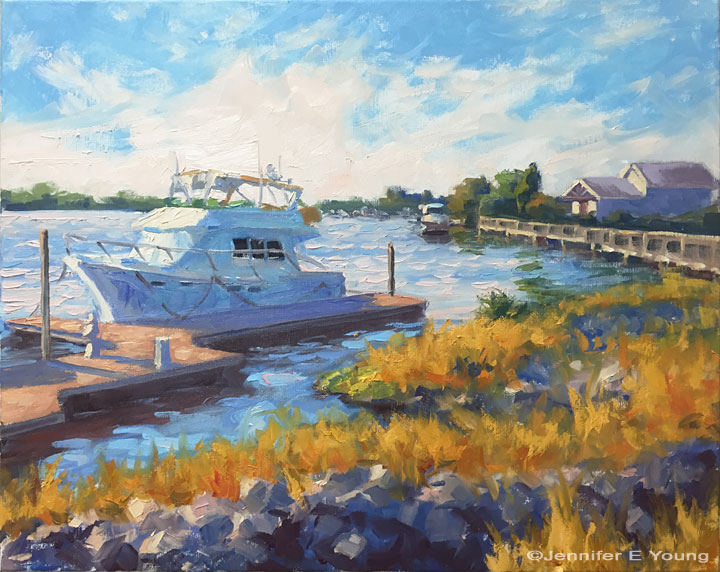Plein air odds and ends
/In this post I thought I'd share a little about some of the tools I carry with me in my plein air pack. Some are specifically designed for the plein air artist, and some I have co-opted for my own nefarious purposes. ;-) This first photo shows a picture of my current setup:
My paint box is one I have mentioned before, but I love it so much I will say it again! It's the Coulter Easel. It is so quick to set up and simple to use. It has lots of work space for color mixing as well. Mine is the Compact model. Coulter's site offers other sizes as well, but I felt that this model was the most versatile for me as while it is lightweight, it doesn't compromise valuable workspace. As for the other items in this photo, I will list them in a clockwise manner.
- A mini sun shield that closes up flat into a small circle. I use this to cast a shade on my palette so that I don't get the glare of sunlight on it. I do have an umbrella, but many times depending on how I position myself, this little shade is all I need. When I do find the need for an umbrella, the model I use is Bestbrella. It works great for me.
- An envelope-style brush holder. Called a "brush wallet", this style brush holder comes with a loop at the top, which I loop onto my tripod handle. I like this brush holder because I can tuck this in behind my palette and have my brushes handy without taking up space on my paint box. (*Note- I couldn't find a source for my brush holder. I bought it a number of years ago and I am thinking I bought it from
- A couple of zip-up pencil bags to carry my paints. In one I carry my large tube of white, my mediums (more about that in a minute) my paint scraper, and palette knife. In another I carry all of my other oil colors.
- A bungee cord to hold my paper towels. The hooks on the bungee loop right over the lip of the paint box.
- A mini trash can. This is something I picked up in the automotive section of a big box store. Like the sun shield it also twists down into a little circle. It stays closed with an elastic band that is attached to the plastic rim. A plastic shopping bag will work in a pinch, but I prefer this style holder over the plastic bag because it doesn't blow around in the wind and remains open as I'm working. This little model came with a plastic loop on the top that I used to thread the bungee cord through, eliminating the need for clips or clamps.
- Protective gloves for my hands. As you can see, by my brush handles, I'm not the neatest painter around, so gloves are a must for me. I became allergic to both latex and nitrile gloves, so the gloves I use are actually food grade gloves by Platex. They are the only semi-sturdy gloves that I don't react to. They actually hold up great. One benefit to these gloves is that I can get them in the grocery store when I'm grocery shopping, so I don't have to make a special trip to the hardware store when I run out.
- A small cat food can. I use this little can to hold a small amount of Gamsol that I use to thin my paint in the very beginning stages of painting. I just pour in a little amount at a time, so when I'm done painting for the day I can just wipe out the can and pack it away.
- A small eyedropper for holding the Gamsol. I'm using an eye dropper because it's small and it's what I had on hand, but any small solvent-safe container will do. Gone are my days of carrying around those heavy metal turp containers. Check the next photo to find out why.
- Gamblin Solvent-free Gel. Okay, I am not painting completely solvent-free, as I prefer a thinned-down , lean application in the beginning for my preliminary drawing. I use Gamblin's Solvent-free Fluid in the studio, but I prefer the gel in my plein air pack as the fewer liquids I have to worry about spilling the better. You can even use this stuff to clean off your brushes between colors and just wash them all up with soap and water back home in the studio.
- A view finder. There are various offerings on the market, but I prefer this simple model. The little lever moves up and down to change the proportions. Several popular sizes are marked on the view finder (9x12, 8x10, 12x16, Etc.) The little holes in the view finder also serve as color isolators as well.
This is not a comprehensive list but it covers most things. There may be a few other odds and ends to discuss, and if I come across them I will definitely share them here on the blog.
















